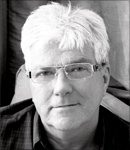 When I was a young lad attending public school in Toronto, one of the favourite day trips laid on every year was a visit to the Sir Adam Beck* generating station (GS) near Niagara Falls, Ontario. On the way, there was always a stop at Niagara-on-the-Lake to visit Fort George, which served as a headquarters for the British Army during the War of 1812. The fort was interesting but, for a bunch of young kids, lunch was far more appealing as evidenced by the way we tore into our brown-bags. When lunch was over we travelled south to Niagara to spend the rest of the day on a tour of the power plant.
When I was a young lad attending public school in Toronto, one of the favourite day trips laid on every year was a visit to the Sir Adam Beck* generating station (GS) near Niagara Falls, Ontario. On the way, there was always a stop at Niagara-on-the-Lake to visit Fort George, which served as a headquarters for the British Army during the War of 1812. The fort was interesting but, for a bunch of young kids, lunch was far more appealing as evidenced by the way we tore into our brown-bags. When lunch was over we travelled south to Niagara to spend the rest of the day on a tour of the power plant.
The term ‘half the fun is getting there’ may have been true on a cruise ship but was certainly lost on several kids as our bus barrelled along the highway in the noon-time heat. In those days opening the side windows of the bus while underway was acceptable and every kid that could took advantage of that and put their arm out to feel the wind. As luck would have it, a kid in the front row got car-sick and started hurling out his open window. He had magnificent aim as a copious amount of a hot, soupy mixture of peanut butter and jam sandwiches, cookies, and milk sprayed the outside length of the bus hitting every exposed arm along the way. At that age, the mere smell, sight or sound of vomiting begets vomiting so you can imagine the rest.
Many people would think the bus episode was the only thing a grade school student would remember about that day. For me, the excitement of the fun-filled bus ride notwithstanding, I will never forget my chin dropping a mile as we entered the power plant. I was overwhelmed by the sheer size of the facility. The floors were so large they seemed to have no end and the ceiling must have been in the clouds. The hum of the giant turbines creating electricity penetrated everything, including us. To this day, I am still gob smacked by industrial behemoths and marvel at their mechanical might. I have returned to the station with my kids since and am still fascinated by its powerful history and proud of its future.
Adam Beck’s manufacturing enterprise made him a tycoon and he enjoyed using this ‘strength’ to further his ambitions both in business and as a Conservative party member. In 1905, the then leader of the government made Beck ‘Power Minister’ and chairman of the Hydro-Electric Power Commission of Ontario, the world’s first publicly-owned utility. Given Ontario’s immense water power resources at Niagara, Beck became an early prominent advocate of municipal and provincial electric power ownership making electricity available to Ontario users at cost. He fiercely opposed privately held companies insisting they never gave ratepayers good value. Beck was instrumental in developing the 450 MW Queenston Chippawa power station at Niagara. The facility was later renamed Sir Adam Beck 1 and, at the time, it was the largest power station on the planet.
Standing there some 50 years ago I never would have guessed how many millions of people would come to rely on the electricity generated by the two plants named after Beck. Nor would I have thought its generating capacity could be increased. But increased it has.
On March 21 of this year, the new Niagara Tunnel was put into service, a monster that can produce more power annually than is consumed by a city of 150,000. Begun in August, 2005, it is a major clean-energy project by Ontario Power Generation (OPG), the province’s publicly-owned power utility. When under construction, the tunnel was the largest renewable energy project of its type anywhere in the world.
The largest hard rock boring machine in existence, nicknamed Big Becky for this job, was used to create the massive new tunnel. It runs from the upper Niagara River parallel to the two existing tunnels that run under the City of Niagara Falls that have been operational since the 1950s. At a maximum depth of 140 metres (459 feet) the new tunnel sits 40 metres (130 feet) lower than the other two. The force of gravity alone propels the water through the 10.2 kilometre (6.3 mile) long structure. At 12.7 metres (41 feet) wide – enough to fit a double-stacked container freight train – 500 cubic metres (17,660 cubic feet) of water per second rush through the tunnel towards the waiting blades. Some have done comparisons equating that much water to filling Olympic size pools but it’s lost on me in the same way filling football fields get lost. I just know it’s one heckuva lot of water rushing beneath your feet. According to Bob Chiarelli, Ontario’s Minister of Energy, this new tunnel will provide the province with a source of clean energy for at least the next 100 years
Ontario is home to more than 250,000 bodies of water that can be considered lakes making water a natural source of power. As I write this, several renewable hydroelectric projects of varying sizes are at different stages throughout the province including:
- New Post Creek Project – a partnership between OPG and Coral Rapids Power LP (CRP) that proposes the development of 25 MW of power by diverting water from New Post Creek into a new generating station located near Fraserdale some 150 kilometres (93 miles) southwest of James Bay. It is under the watchful eye of the provincial Environmental Assessment Act for waterpower projects. A new seven kilometre (4.4 mile) long transmission line will connect the CRP power to an existing Hydro One line.
- An OPG proposal to expand the Ranney Falls GS with the addition of a new 10 MW hydroelectric generating unit and powerhouse to replace an expired 0.8 MW unit on the existing site. The existing forebay and tailrace channel will also be improved. This will increase the station’s capacity to approximately 18 to 20 MW overall. A new substation will connect with an existing Hydro One Networks Inc. distribution line. The project is located on the Trent Severn Waterway at Campbellford, about 150 Kilometres (93 miles) northeast of Toronto. Environmental approval will be granted this year.
- Little Jackfish Project, which is located about 240 kilometres (150 miles) northeast of Thunder Bay on Lake Superior. It will see approximately 78 MW of renewable hydroelectric power added through a newly constructed GS on Little Jackfish River that drains into Lake Nipigon. Dam automation, construction of a 180 kilometre (112 mile) long 230 kV transmission line to connect the GS to the grid, and a 25 kV line connecting the GS to the dam comprise the undertaking. When completed, the 380 gigawatt hours of energy can light up 78,000 homes. OPG is in constant contact with all respective First Nations and Métis government agencies and local peoples to ensure any environmental concerns are addressed.
- Approximately 440 MW of new hydro power that will be produced in northeastern Ontario by the Lower Mattagami River project. The clean energy will come from additional generating units at Little Long, Harmon, and Kipling, and a replacement single three unit station at Smoky Falls. The four stations are all on the Mattagami River approximately 200 kilometres (125 miles) southwest of Moose Factory, a town that sits near the southern tip of James Bay. When operational a total of 924 MW of renewable electric power will be available on demand for the region.
I have to say that I feel incredibly privileged to be part of the fabric of a place that boasts such a vast source of clean energy and awe-inspiring beauty.
* In 1914, Beck was knighted by King George V for services rendered to the Commonwealth of Canada.







